3 Best Options Strategies for Passive Income in 2025
3 Best Options Strategies for Passive Income in 2025


By Billy Ribeiro | Globally Recognized Trader & Market Strategist
Billy Ribeiro is a globally recognized trader renowned for his mastery of price action analysis and innovative trading strategies. He was personally mentored by Mark McGoldrick, famously known as “Goldfinger,” Goldman Sachs’s most successful investor in history. McGoldrick described Billy Ribeiro as “The Future of Trading,” a testament to his extraordinary talent. His groundbreaking system, “The Move Prior to The Move,” enables him to anticipate market trends with unmatched accuracy.
Introduction
If you want to generate income from the market without day trading or speculation, you’re in the right place.
Here are the 3 best options strategies for passive income in 2025, each handpicked for consistent yield, defined risk, and ease of execution. These aren’t theoretical. They’re strategies I use in my own account.
Why Options Work for Passive Income
Time decay, or theta, erodes option value with each passing day. As an options seller, this decay becomes your edge.
By using defined-risk, premium-selling strategies, you can pull money out of the market without needing price to move in your favor.
1. Covered Calls
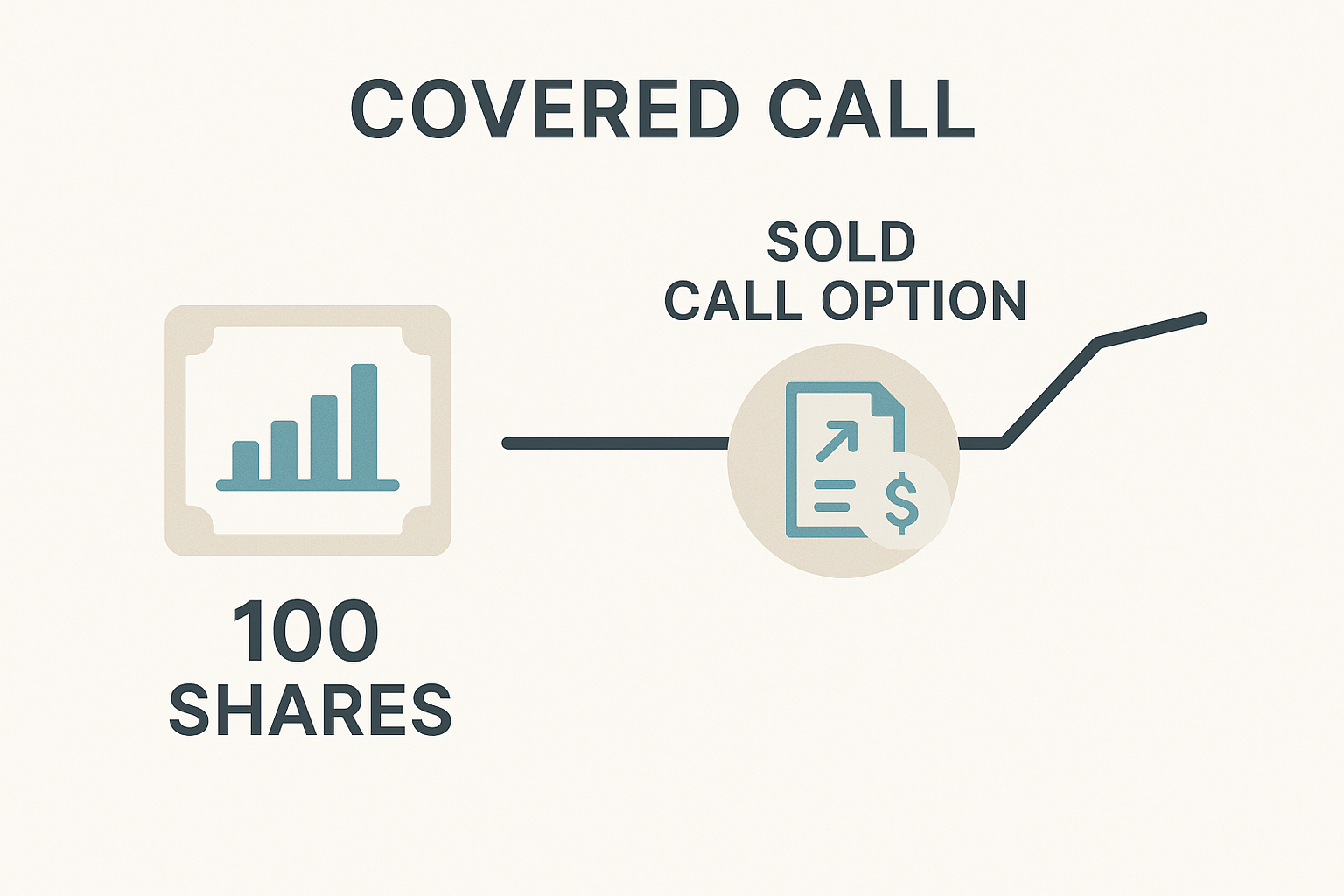
Table of Contents
ToggleHow It Works:
You own 100 shares of stock and sell a call option above the current price. If the stock stays below the strike, you keep your shares and the premium. If it rallies above the strike, your shares are sold at a profit.
For Example:
Say you own 100 shares of Johnson & Johnson (JNJ), trading at $158. You sell the 165 call option expiring in 45 days for $2.00. That’s $200 income. If JNJ stays below $165, you keep the premium and the stock.
Billy’s Take:
“I love using covered calls on dividend stocks like JNJ. I sell calls with a 30-delta and 30 to 45 days to expiration. It’s like stacking an extra dividend on top of a stable position.”
2. Cash-Secured Puts
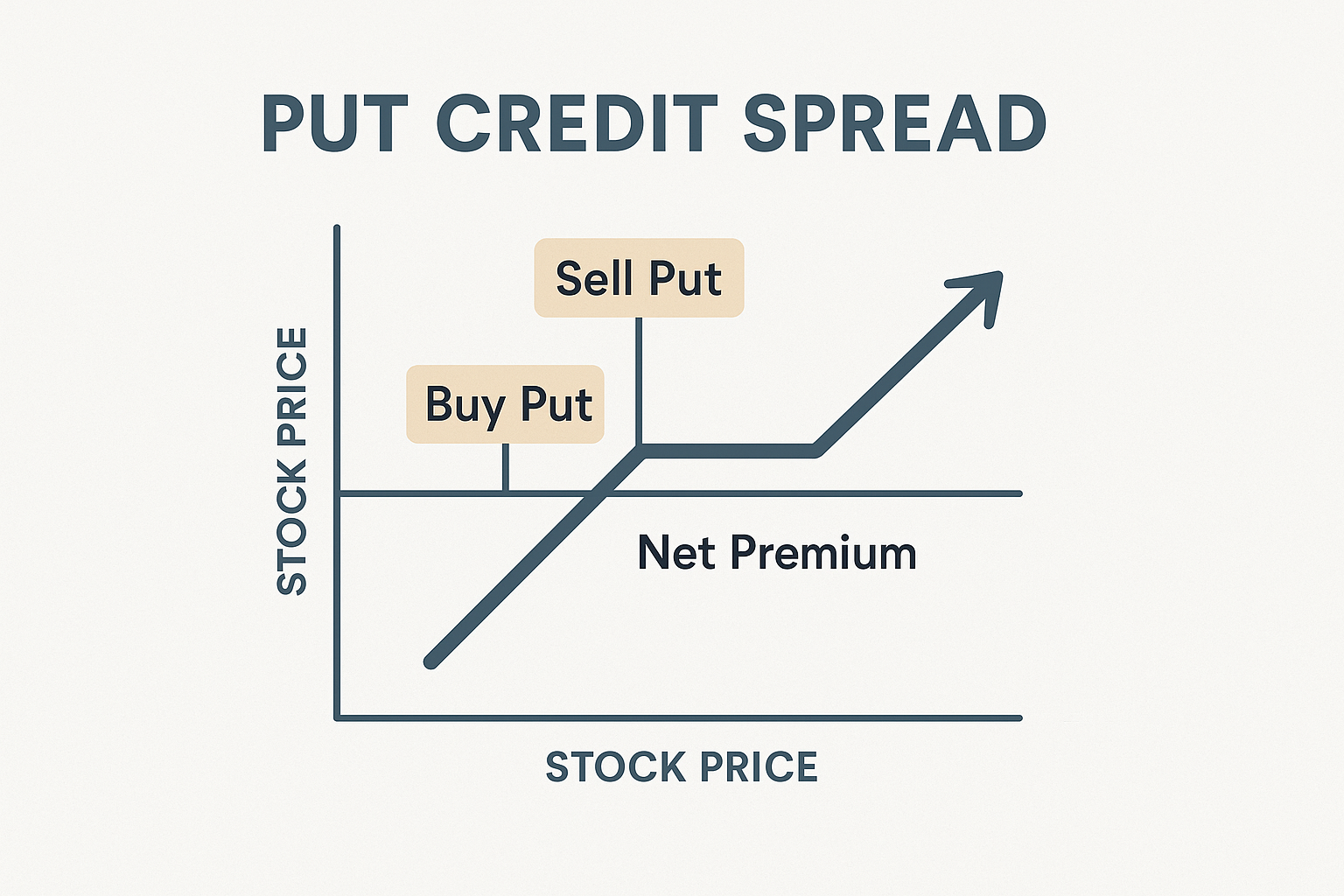
How It Works:
You sell a put option below the current price while keeping enough cash on hand to buy the stock if assigned. If the stock stays above your strike, you collect the full premium. If it drops, you buy it at the strike price.
For Example:
Apple (AAPL) is trading at $195. You sell the $190 put for next month for $2.50. That’s $250 in income. If AAPL stays above $190, you keep the cash. If it drops, you buy 100 shares at a price you wanted anyway.
Billy’s Take:
“When I want to own a stock at a lower price, I sell puts instead of placing limit orders. This way, I either get paid or I buy it cheaper. Win-win.”
3. Credit Spreads
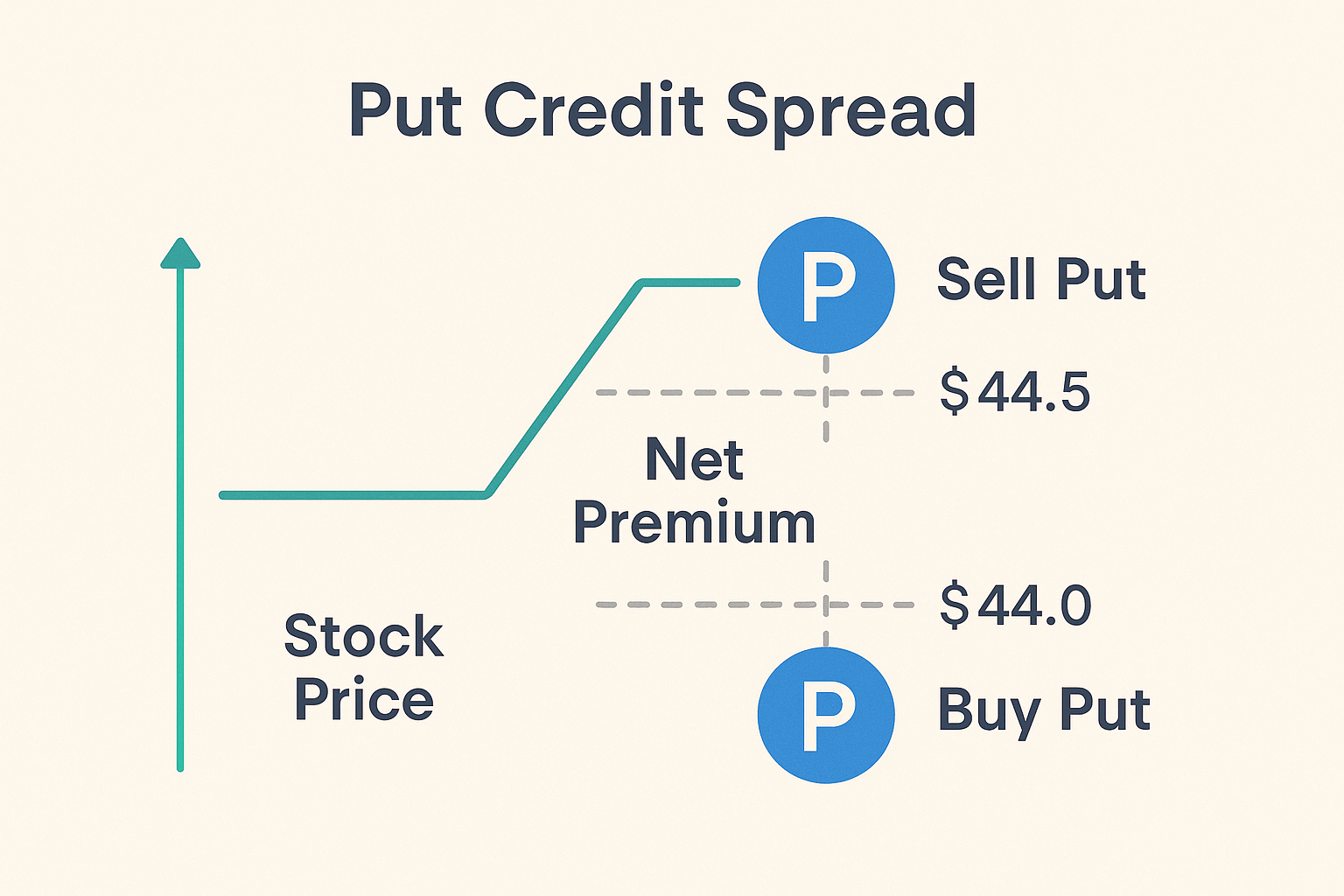
How It Works:
You sell a put option and buy another one further out-of-the-money. This defines your risk while letting you collect a net credit. If the price stays above both strikes, you keep the full premium.
For Example:
SPY is trading at $450. You sell the $445 put and buy the $440 put for the same expiration, collecting $1.00. Your max profit is $100. Your max loss is $400 (difference between strikes minus credit).
Billy’s Take:
“I run weekly credit spreads on SPY and QQQ, especially in quiet markets. I size small, stay near 5-delta to 10-delta, and let theta do the work.”
Bonus Strategy: Weekly Strangles
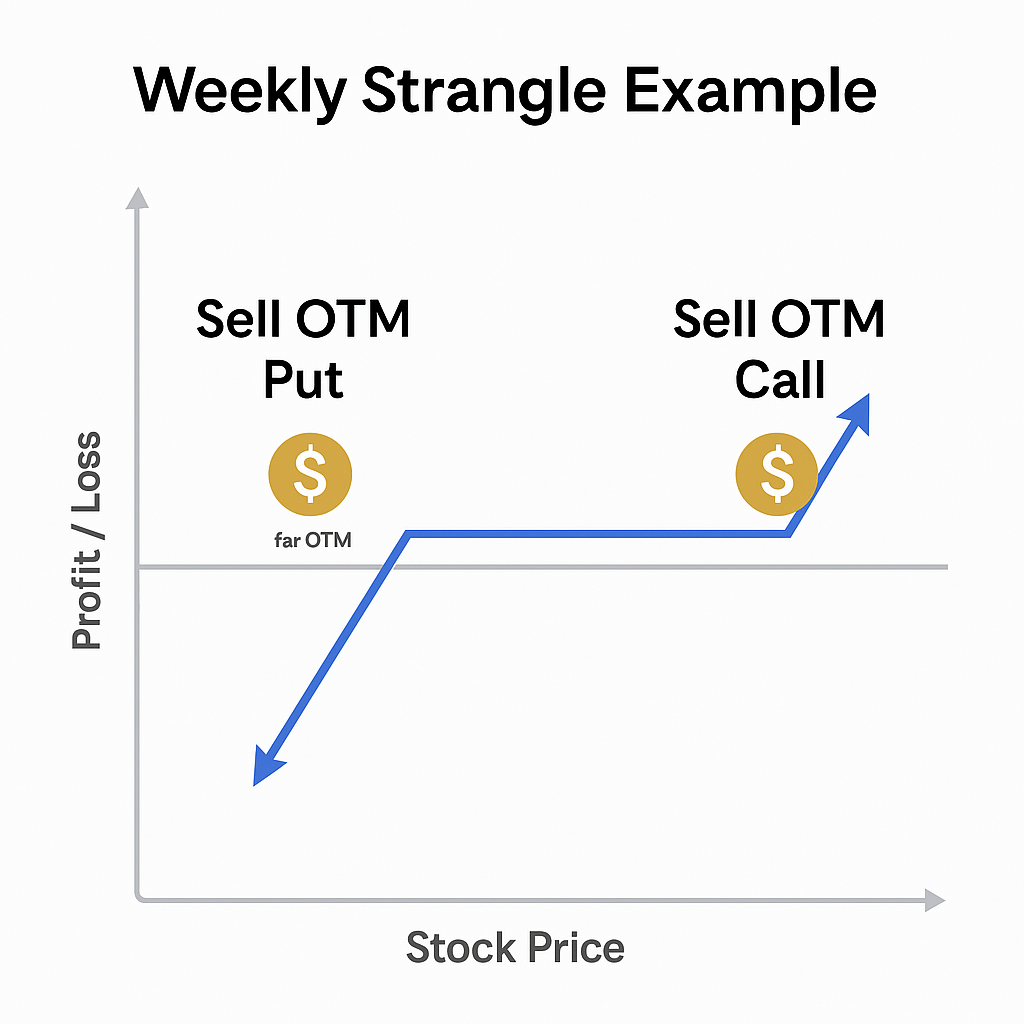
This strategy involves selling both a far out-of-the-money call and put. You collect two premiums, betting the stock stays in range.
⚠️ Warning: Risk is unlimited. Only use if you understand how to manage gamma and margin.
Strategy Comparison Table
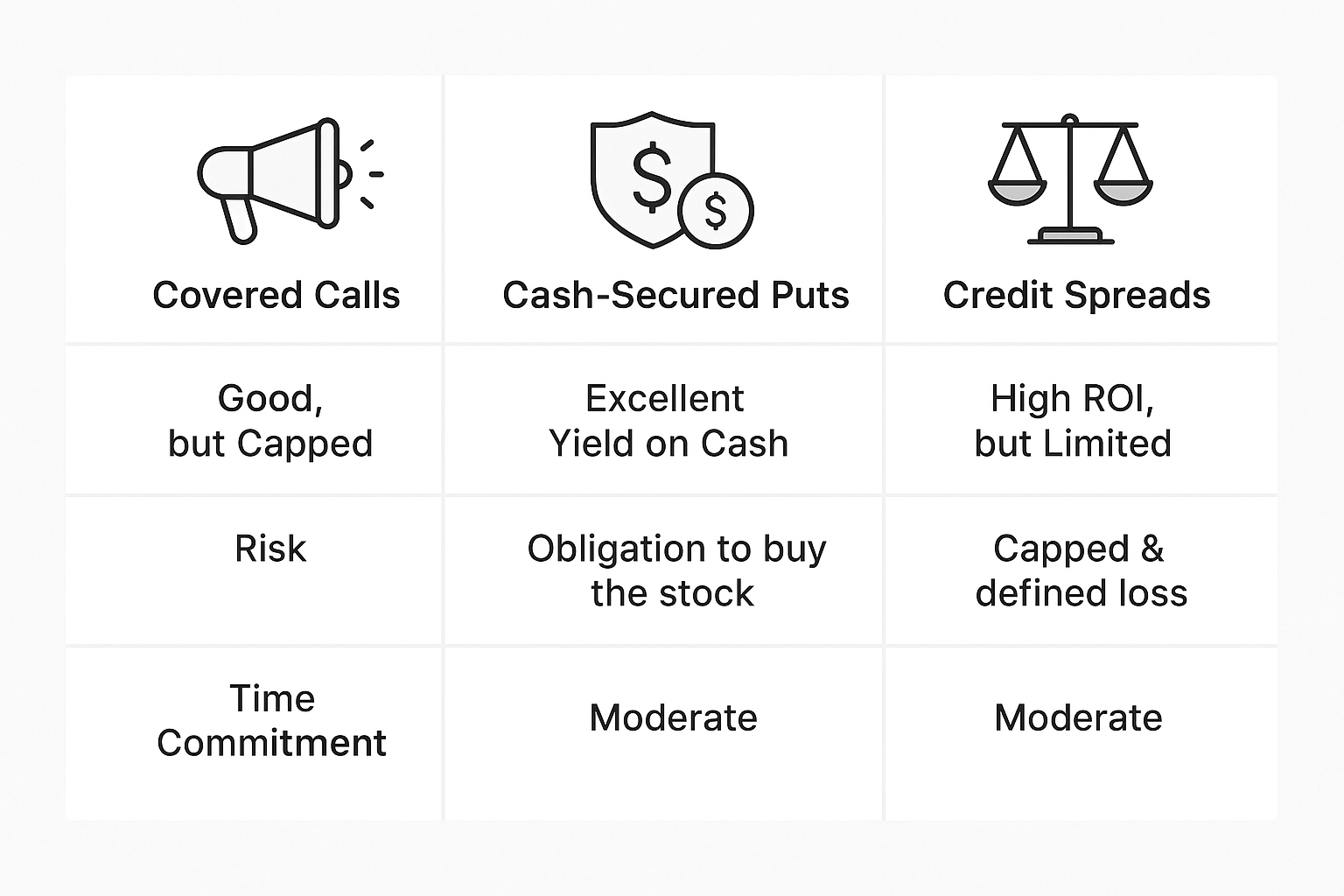
Broker & Tax Considerations
- Premiums are taxed as short-term capital gains
- Covered calls and puts require Options Level 2
- Credit spreads require Level 3 and margin
- Confirm with your broker and CPA before you begin
5 Steps to Start Earning in 2025
- Apply for options trading approval (Levels 2 or 3)
- Choose a liquid, stable ticker like SPY, AAPL, or KO
- Start with 1 contract on a proven strategy
- Track your results and journal every trade
- Scale only when consistent
Conclusion
If you’re serious about building passive income in 2025, these three strategies are the gold standard.
Covered calls pay you to hold. Cash-secured puts pay you to wait. Credit spreads let you control risk tightly while still collecting consistent premium.
Master the setup. Let time decay do the work. Stack your edge, one trade at a time.
Continue Your Learning
-
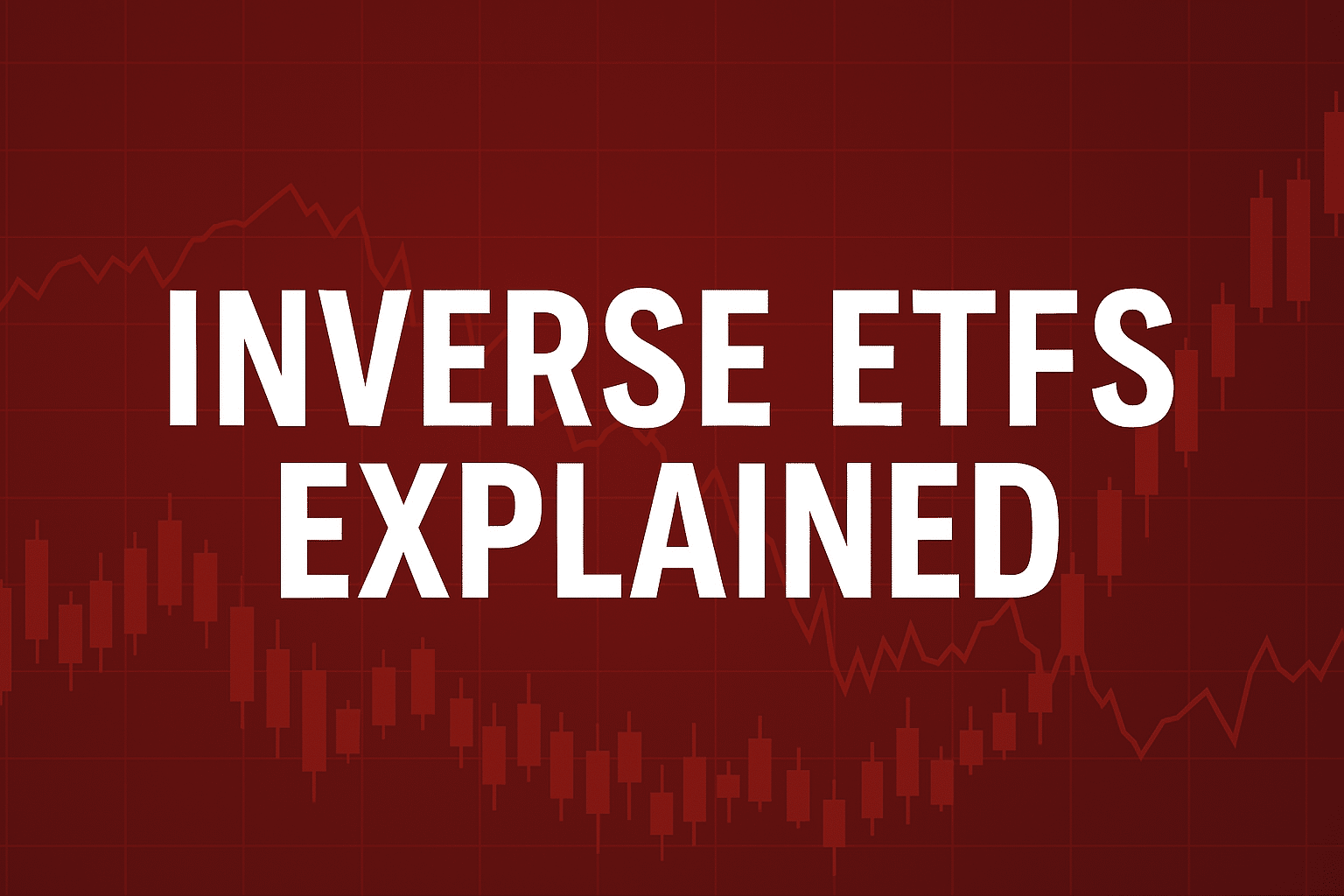
Inverse ETFs: How to Profit When Markets Go Down
Learn how to use inverse ETFs to hedge your portfolio or profit from market corrections without the complexities of short selling.
-
The Ultimate Guide to Options Greeks
Master Delta, Gamma, Theta, and Vega to understand option pricing and manage your positions like a professional.
-
Is Trading Options Hard? Here’s the Truth
A realistic look at the challenges and opportunities in options trading and what it truly takes to succeed.
Elevate Your Trading Skills
Ready to understand how economic policies affect market trends? Join our community for in-depth analysis and expert strategy. Sign up today to start trading with a real edge!
Recommended External Resources
| Topic | Resource | Why It Matters |
|---|---|---|
| Options Basics | SEC Options Guide | Official regulator-approved content for retail traders |
| Theta Decay | Investopedia: Theta | Explains how premium sellers profit without price movement |
| Broker Risk Levels | FINRA Options Education | Covers approval tiers, margin rules, and options risk tiers |
Frequently Asked Questions (FAQ)
Q: Can I use these strategies with a $5,000 account?
A: Yes, absolutely. For smaller accounts, credit spreads are often the best starting point because the margin requirement is low and the risk is strictly defined. You can also trade cash-secured puts on lower-priced, quality stocks or ETFs where 100 shares would not consume your entire account.
Q: What if I get assigned the stock? Is that bad?
A: Assignment isn’t necessarily bad; it’s part of the strategy. With a cash-secured put, assignment means you buy a stock you already wanted, but at a discount. With a covered call, it means you sell your shares at a profit. The key is to only use these strategies on stocks you are genuinely happy to own (for puts) or sell (for calls) at your chosen strike prices.
Q: How do I choose the best strike price?
A: The simplest professional method is to use an option’s “delta,” which is a rough measure of the probability of the option expiring in-the-money. I like to sell options with a low probability of being challenged. My general rule is a 30-delta for covered calls, a 25-delta for cash-secured puts, and a very safe 5 to 10-delta for spreads. This provides a great balance of collecting a reasonable premium while maintaining a high probability of success.
Q: What makes a stock good for covered calls or cash-secured puts?
A: Look for high-quality, liquid stocks that you wouldn’t mind holding long-term. The ideal candidates are typically blue-chip stocks or major ETFs (like SPY, QQQ) that have high trading volume, tight bid-ask spreads, and tend to trade in a range or a slow, steady uptrend. Avoid extremely volatile, speculative stocks, as sharp price moves can quickly turn a safe trade into a problematic one.
Q: How “passive” is this? When should I close a position?
A: It’s significantly more passive than day trading. Many positions can be reviewed just once a week. However, a professional best practice is to not always hold until expiration. A common rule is to take profits when you have achieved 50% of your maximum potential profit. For example, if you sold a credit spread for a $1.00 credit ($100), you would close the trade when you can buy it back for $0.50. This frees up your capital and dramatically reduces the risk of the trade turning against you in the final days.
Q: Is high or low implied volatility (IV) better for selling premium?
A: As a premium seller, higher implied volatility is generally better. High IV means option prices are more expensive, so you collect a larger premium for taking on the same amount of risk. The ideal scenario is to sell options when IV is historically high and then close the position as IV returns to its average, as you profit from both time decay (theta) and the drop in volatility (vega).
Q: Is this the same as “The Wheel” strategy?
A: You’re very close! The “Wheel” is a popular strategy that combines two of these methods. It starts with Step 1: repeatedly selling cash-secured puts until you get assigned and buy the stock. Then you move to Step 2: repeatedly selling covered calls on the stock you were just assigned. It’s a systematic way to continuously generate income from a stock you want to own.
Get Actionable Insights Direct to Your Inbox
Get Your Free Trading Edge
Instant access to our weekly market insights
By subscribing, you agree to receive marketing emails from Revolution Trading Pros. Unsubscribe at any time.
- ✓ Weekly Insights
- ✓ No Spam
- ✓ Unsubscribe Anytime
Disclaimer: The content provided in this article is for informational and educational purposes only. It does not constitute financial advice. Trading stocks, options, and leveraged ETFs involves substantial risk and is not suitable for every investor. You could lose all or more of your initial investment. Always conduct your own research and consult with a licensed financial advisor before making any investment decisions.





